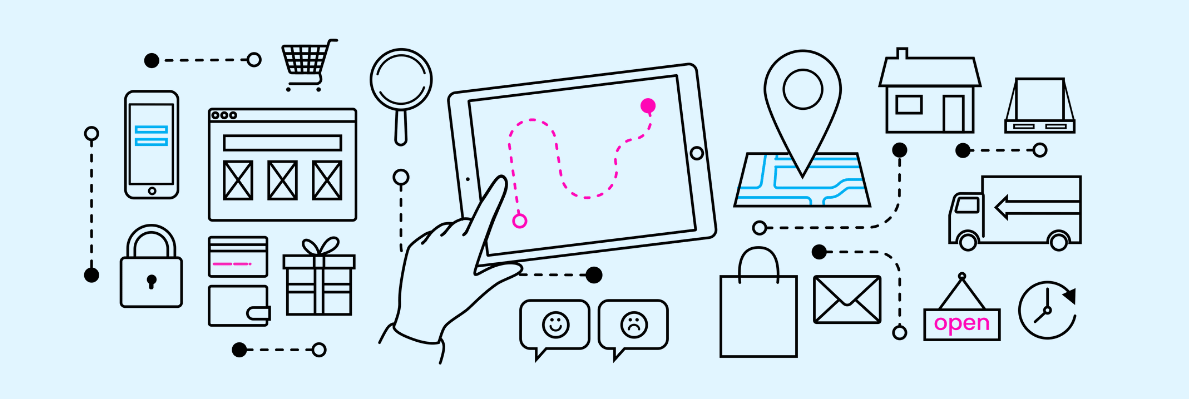Bad user experience
Using a website can be frustrating in all sorts of ways, but these frustrations all amount to the same thing - a bad experience for the user. Bad experiences mean dissatisfied customers, who are less likely to return to a site and less likely to recommend it to others, or more likely to leave a negative review. Bad user experiences can even affect a site’s Google ranking. Google looks at the way a site is used to see if it’s serving the user’s search intent, it does this by taking into account page dwell times and other factors to see how visitors are using a site.
So why are there so many frustrating websites out there, and how can we make sure ours isn’t one of them?
What causes bad UX?
As a designer, I spend most of my time trying to see things through other people’s eyes. This becomes harder and harder as a project goes on, because I start to get a really good understanding of the business I’m working with, their set up and processes, along with the intricacies of the interface I’m designing. All of these things mean my objectivity is naturally lessening over time. Our clients are in a similar position because they know their business so well. We start to make assumptions for our users that can be biased by our own knowledge. Try as we might, being aware of this doesn’t mean we can easily overcome it.
The truth is I can try my very hardest, I can look at similar websites and follow the patterns and conventions that users are becoming accustomed to, I can ask a colleague what they think. We can A/B test and analyse the data, but none of these things will come close to setting up a user test, and watching the actions and hearing the thoughts of the subjects.
I remember the first time, probably around 2004, that I observed some live user testing on a site I’d designed, the participant was in the test booth, on the other side of a one-way mirror, or perhaps we had a video link, the memory is a little hazy now. Either way, it was disappointing, the test subject really struggled with tasks I’d been sure would be clear and intuitive. I was expecting a gold seal of approval, but instead it was a rude awakening. I took the lesson though, and I realised just how hard it is to try and anticipate what a user will be thinking. The insights that come from user tests never fail to amaze me. I take those and keep them in mind on the next project, but there’s always something to refine, improve or rework.
User Testing
Now that I have quite a few years experience under my belt - there was a clue in the date of my first user test - I realise I thought I needed to have all the answers, that as a designer it was my job to know the best way of doing things. Now I know what I really have is lots of ideas and theories, but until they are tested, refined and tested again, I just can’t tell you for sure if a layout will work as well for your customers, and the information you’re presenting, as it did for a different business presenting different information. We’ll create well-researched personas and make assumptions based on them, we’ll create different versions of a page and A/B test them, but there’s just no substitute for what you’ll learn watching a real person try to use a website.
Today, it’s easier than it’s ever been to get some actionable feedback from user testing. We can create quick and dirty prototypes with ease, and online user testing services make it simple and affordable to set up and run tests, you can add screening questions to refine your panel or even invite your own customers.
Without really understanding the advantages of conducting a user test it can be easy to miss the value and see it as a non-essential to your web project. Think back to some of those frustrating experiences you’ve had online and it’s not hard to see those sites really could have benefitted from testing.
At Selesti we really champion the user test and see it as a vital part of a successful project, if you’d like to learn more about how user testing could help improve your website then please get in touch.
